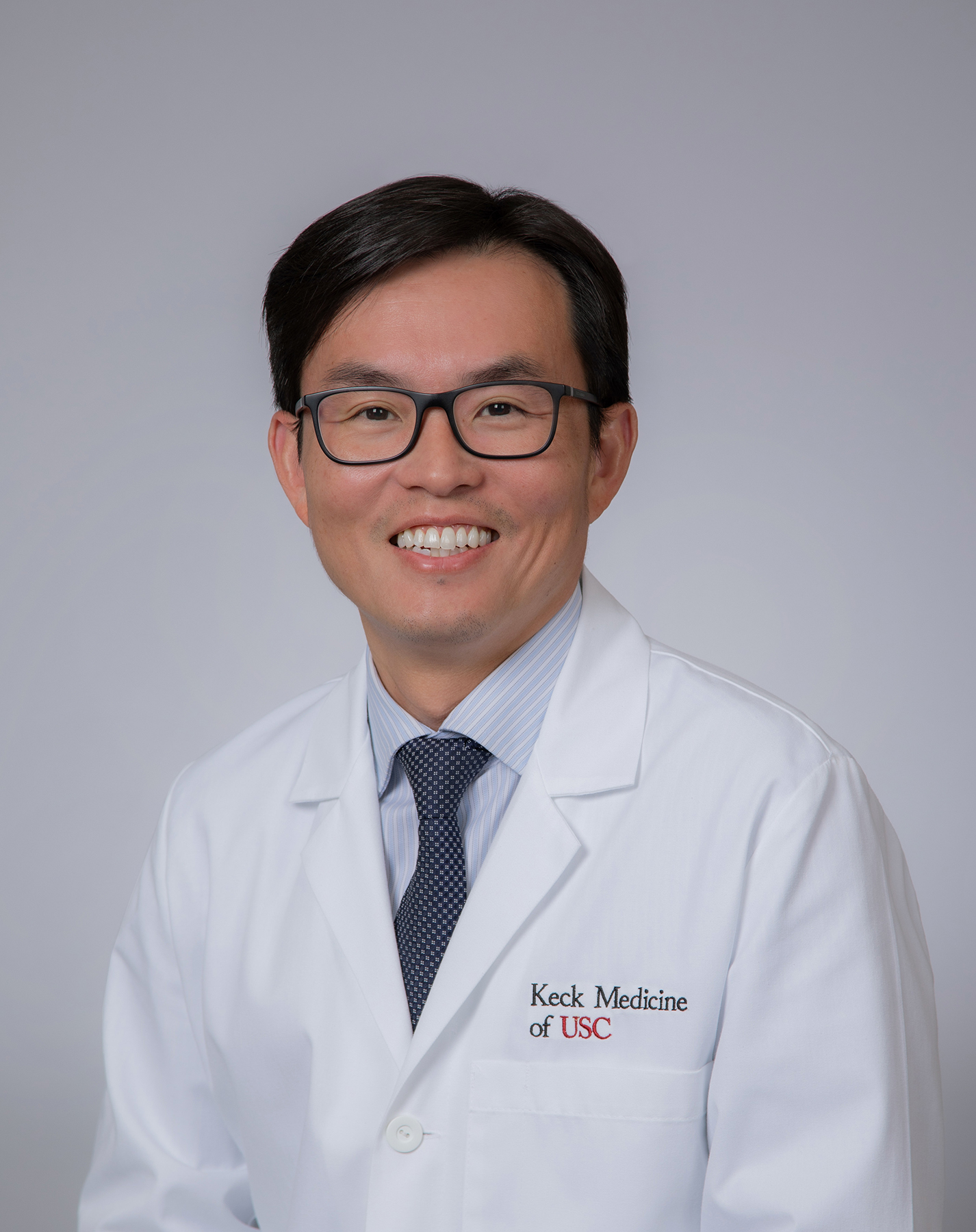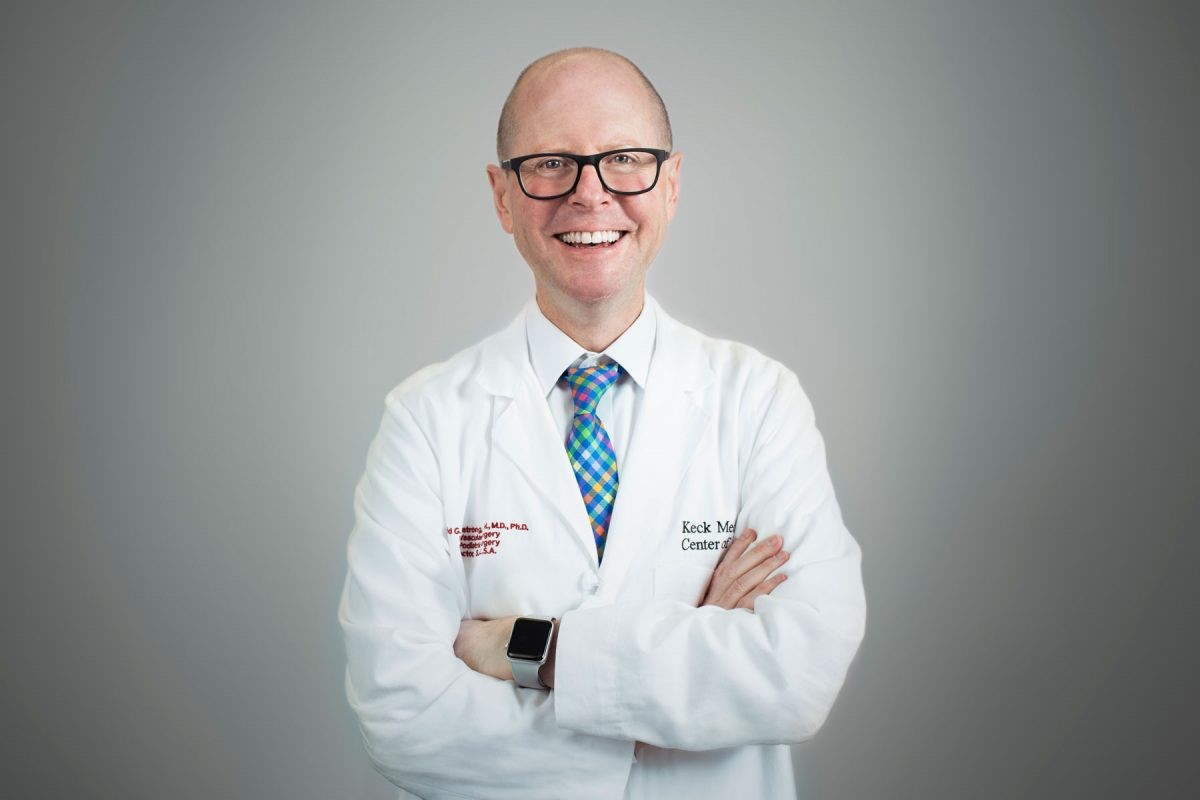The Los Angeles County Department of Health Services (LADHS) announces the formation of a new workgroup targeting the epidemic of avoidable diabetes-related amputations. Led by a team of international experts in diabetes-related limb care Rancho Los Amigos, Dr. David Armstrong (Podiatry) and Dr. Tze-Woei Tan (Vascular Surgery), with support from specialty leaders in podiatry, vascular surgery, rehabilitation, primary care and inpatient/emergency services, the Limb Preservation Workgroup helps direct LADHS’ innovative diabetic foot care management across Los Angeles County.
Diabetes-related amputations represent a major preventable health risk for patients living with diabetes and lower extremity limb loss in particular is one of the most devastating events in a patient’s life, with five year mortality approaching 70% and even higher in the population of patients that LADHS serves.1 The LADHS Limb Preservation workgroup supports the innovative efforts underway within LADHS’ hospitals and clinics to improve care management for acute diabetic foot infections as well as to address care gaps in chronic disease management, patient surveillance, and care coordination.
Advanced diabetes causes nerve damage that results in patients’ inability to feel pain.
“That usually means diabetics do not know when they have injured their feet or when those limbs become infected,” Dr. Armstrong said. “Lack of treatment can cause the limb to be threatened and in some cases requires amputation to save a patient’s life. But many amputations are avoidable, especially when the right providers and right care are brought together at the right time to save a limb.”
The LADHS Limb Preservation workgroup is working to implement groundbreaking research conducted by Dr. Armstrong within the UK National Health Service and other institutions including DHS’s own Rancho Los Amigos National Rehabilitation Institute, which was named among US News and World Report’s “Best Hospitals” earlier this year. Dr. Armstrong’s work at Rancho has been at the forefront of early detection and treatment to lessen or avoid the effects of diabetes-related limb infections.
The heart of the program is composed of two components: the “Hot Foot” line, an acute triage program which triggers urgent evaluation of diabetic foot infections by podiatry, vascular surgery and infectious disease physicians to provide rapid, organized multidisciplinary limb preservation care, and the “Toe, Flow, and Go” model which transitions patients with acute diabetic foot infections to specialists in podiatry, surgery and rehabilitation services in the ambulatory setting to improve care management and disease surveillance. DHS patients are further supported by a network of specialized ancillary services including social workers, physical therapists, and prosthetics providers, to help identify the social determinants of health that have led to diabetes complications, speed recovery and promote a return to an independent lifestyle to ultimately minimize amputations and future complications.
Dr. Armstrong’s research on this model indicates that the implementation of the “Hot Foot” line and the “Toe, Flow and Go” model reduce high level amputations by more than 50% and increase ulcer free days by even more, leading to healthier and more productive patients.2,3 Preliminary data on the implementation of these programs at DHS indicate they have led to an improvement in diabetic limb care outcomes.4
“This initiative represents a unique opportunity to improve diabetes-related limb care integration by implementing proven solutions in a major safety health system,” said Dr. Evan Raff, LA County DHS Director of Specialty Care. “LA County DHS is the largest public health system in the country we are aware of to implement such a coordinated limb-preservation program.”
Patients and providers at all four LADHS hospitals – LAC+USC Medical Center, Harbor-UCLA Medical Center, Olive View-UCLA Medical, and Rancho Los Amigos National Rehabilitation Center – along with the 20+ community clinics across the ACN have access to teams dedicated to limb preservation to improve the overall health of their patients across Los Angeles County.
Despite the challenges facing patients with diabetes, the future is bright for diabetic limb preservation efforts across Los Angeles County and beyond. The LADHS Limb Preservation workgroup is also partnering with national and regional organizations, including the American Limb Preservation Society and the Southwestern Academic Limb Salvage Alliance to develop tools, educational programs, and awareness around diabetic foot care to its network of providers and members. Dr. Tan and his research team at USC are also actively pursuing projects to evaluate how innovative digital technologies and virtual care strategies can provide more effective care for DHS patients at risk of diabetes-related limb loss.
The DHS Limb Preservation workgroup is furthering LADHS’ strategic initiatives to improve population health and deliver high quality, patient-centered care to improve chronic disease management and enhance patient’s long-term health and wellness by reducing unnecessary amputations and addressing the social inequities that underlie them.
—
- Armstrong DG, Swerdlow MA, Armstrong AA, Conte MS, Padula WV, Bus SA. Five year mortality and direct costs of care for people with diabetic foot complications are comparable to cancer. J Foot Ankle Res 2020;13(1):16.
- Armstrong DG, Bharara M, White M, et al. The impact and outcomes of establishing an integrated interdisciplinary surgical team to care for the diabetic foot. Diabetes Metab Res Rev 2012;28(6):514–8.
- Armstrong DG, Boulton AJM, Bus SA. Diabetic Foot Ulcers and Their Recurrence. N Engl J Med 2017;376(24):2367–75.
- Pyun AJ, Khan T, D’Huyvetter K, et al. Time is Tissue: Outcomes After Implementation of an Interdisciplinary Integrated “Hot Foot Line” and Limb Preservation Service. J Vasc Surg 2021;74(3):e39–40.

Co-leader of the workgroup Dr. Tze-Woei Tan.

Co-Leader of the workgroup Dr. David G. Armstrong.